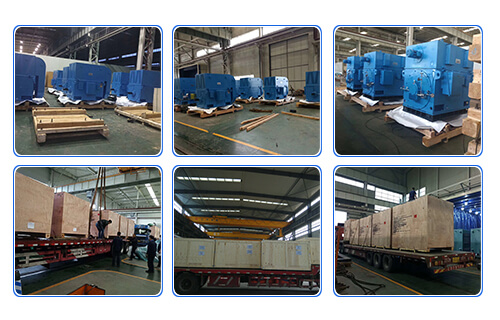As the pace of vehicle electrification accelerates, many people want to know which motor is best suited for modern electric drivetrains. Is it a three-phase induction motor or a permanent magnet motor? Both types of motors are currently used in electric vehicles. Both offer high efficiency and reliable performance. But which is better? Let's look at the advantages and potential disadvantages of permanent magnet motors.
As the name implies, EV permanent magnet motors use permanent magnets in the rotor. The AC current applied to the stator causes the rotor to rotate. Since the magnets are permanently magnetized, the rotor can run in synchronization with the switching AC current. The slippage required for induction motors is eliminated, resulting in improved thermal efficiency.
The inherent efficiency of the permanent magnet motor is higher than that of the induction motor. Both motors feature a three-phase design through fully optimized performance. The brushless PM motor design provides 2-3 times higher power density than induction motors with approximately 50% less core loss.

Permanent Magnet Synchronous Motor
In permanent magnets, the rotor can now be a solid piece made of pressed and sintered powder metallurgical magnetic material (for example). You can design the rotor so that the magnets are glued to the outer diameter or encapsulated inside the rotor.
It does not have to be made of electrical steel! The powdered metal rotor can be designed with the net shape of the powdered metal having the slots you see in the picture above, thus eliminating the need for expensive machining. By using sintered soft magnetic materials, powdered metal rotors for permanent magnet motors can achieve strengths similar to those of competing processes.
However, the rotor material for induction motors still consists of stamped electrical steel stacks. The stamping process produces much more scrap than powder metallurgy, and as you stack more sheets, core losses increase.
A 50 kW (about 70 HP) permanent magnet motor typically weighs less than 30 pounds. PM motors used in the automotive industry include the Chevy Bolt and, increasingly, the Tesla.
The Tesla Model 3 also uses a permanent magnet motor with magnets arranged in a Halbach array. This array focuses flux lines to optimize MPG equivalence.
Tesla's larger vehicles, the Model S and Model X, swapped their smaller front motors for permanent magnets after seeing the impressive range of the Model 3. These models use front-wheel drive for cruising and all-wheel drive for acceleration and low traction.

High-voltage High-Efficiency Permanent Magnet Variable Frequency Motor
A major consideration for permanent magnet motors is the cost of the magnets. If you have used high-energy magnets (e.g., iron neodymium boron), you will feel the budget pain (or your boss will have). The potential waste of stamped laminated material only compounds the problem.
There are many opportunities for powder metallurgy in these types of motors. The rotor of a permanent magnet motor can be made from sintered powder metal, whether you go the internal or external design route. Stators can also be produced from soft magnetic composites. At the high switching frequencies expected, the SMC losses are lower than those of a stack of 3% SiFe, further improving the efficiency of the design. In short, soft magnetic composites are customized for high frequencies.

Despite the advantages of using powder motor materials in a permanent magnet design, choosing a motor type for your drive train can be difficult. AC induction motors are still viable due to the efficiency and performance improvements of the 20th and 21st centuries. The permanent magnet motor is a relative newcomer, but it promises higher performance and potentially lighter weight.
If you're torn and don't know how to choose, contact us for a quote and expert guidance.
Copyright © ZCL Electric Motor Technology Co., Ltd. All Rights Reserved | Sitemap | Powered by 